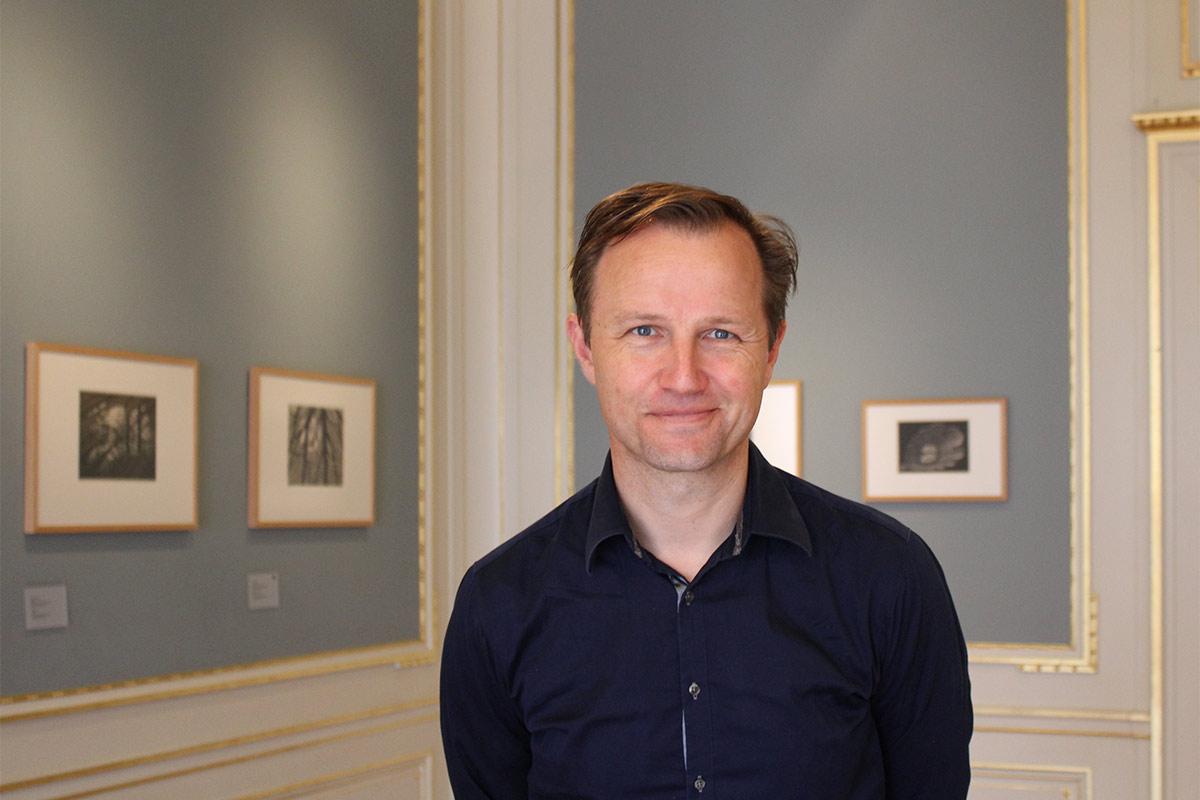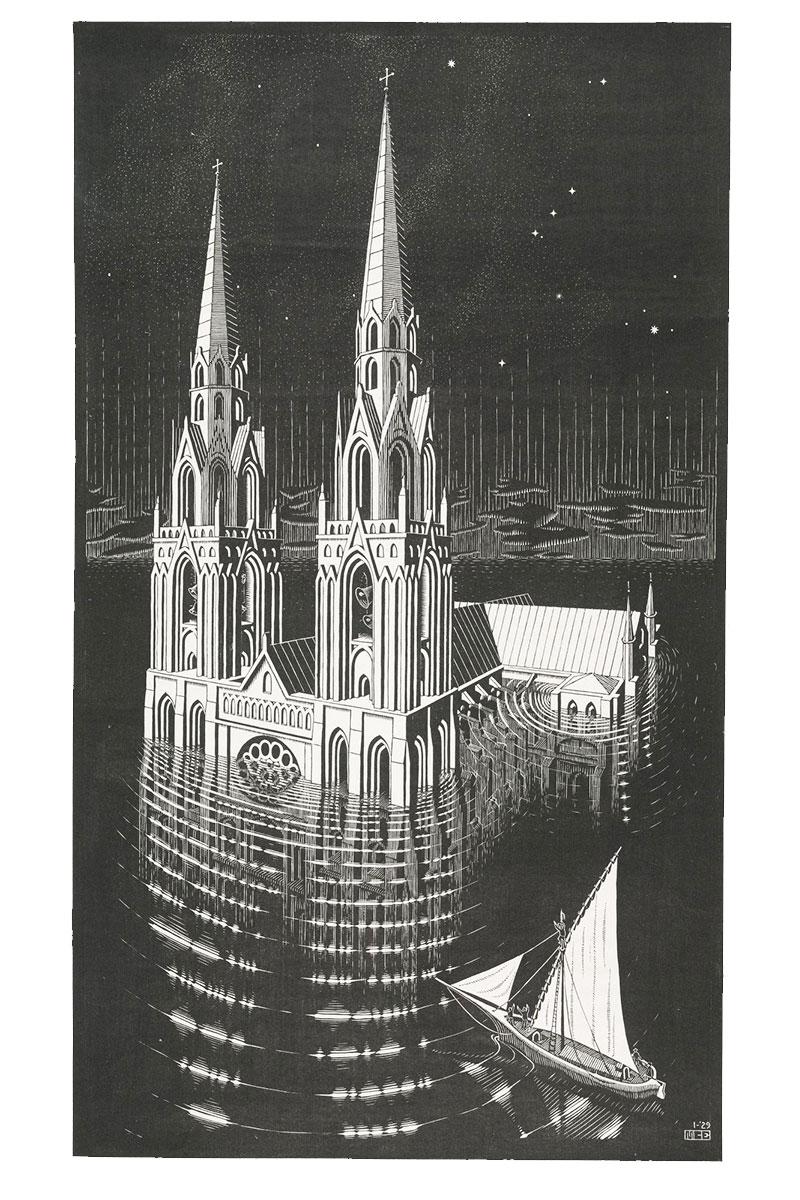

Escher visited Sicily for the first time in the spring of 1932, together with his friend and painter Giuseppe Haas-Triverio. From Palermo they travelled to the coast, circled Mount Etna, to Randazzo and visited the lava formations at Bronte. In just over a month, Escher made 23 drawings and took numerous photos.
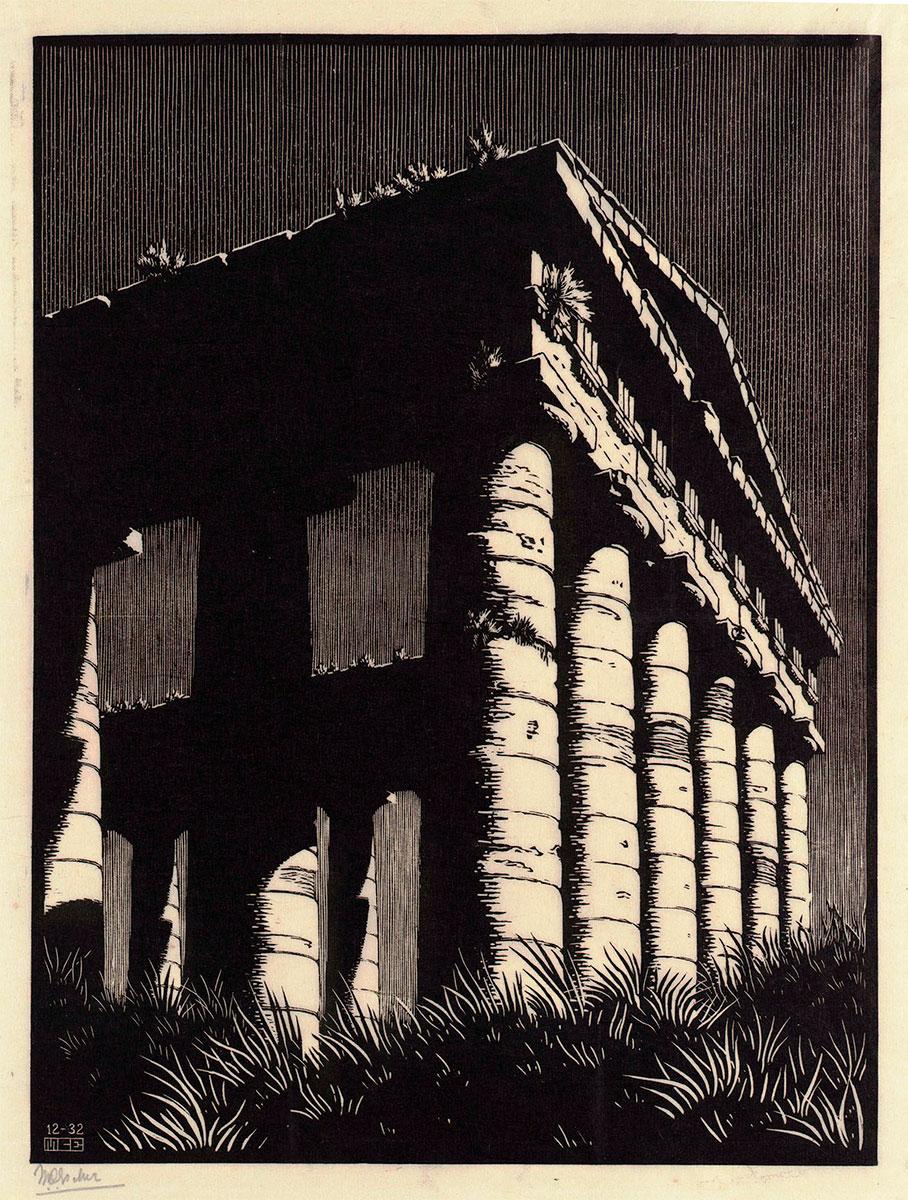
The temple of Segesta was built around 430-420 BC, on a hill just outside the site of the ancient city of Segesta. On 17 May 1932, Escher spent several hours at the - never finished - Greek temple with Giuseppe Haas-Triverio. He enjoyed himself but he also looked for the best angle from which he could capture the Doric temple.
For his composition, Escher eventually arrived at a low three-point perspective in which the temple is looming over him. The receding columns and the pediment at the front form a strong angle with the sides. That same day, 17 May 1932, Escher created a drawing in chalk, using the same angle as in the photo. Notice the difference in the shadows falling on the temple, which come from a different angle. The photo was taken several hours before this drawing.


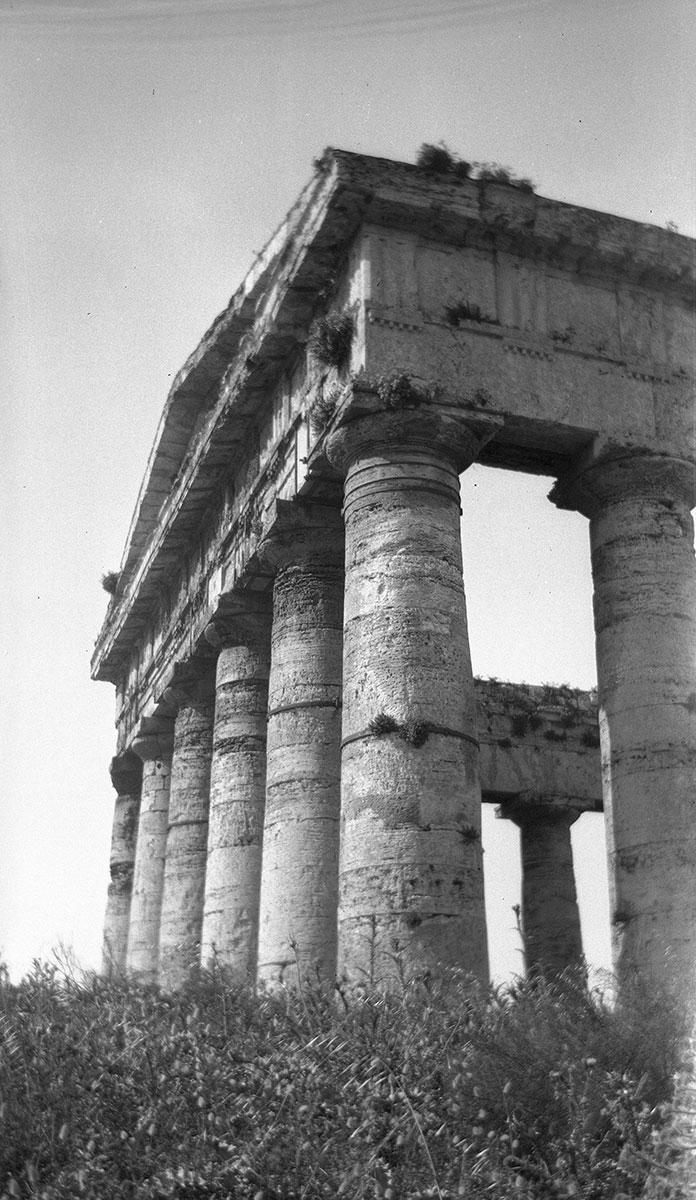
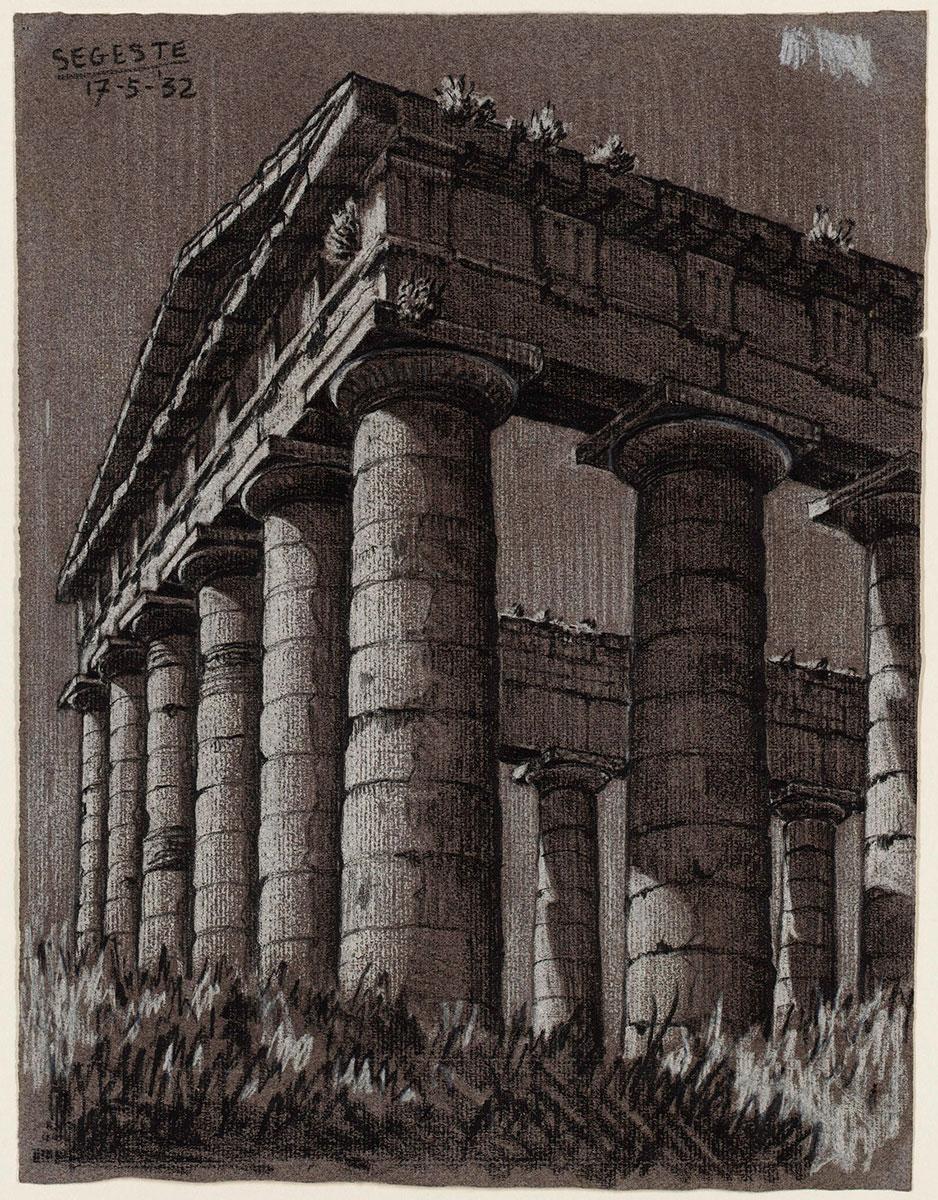
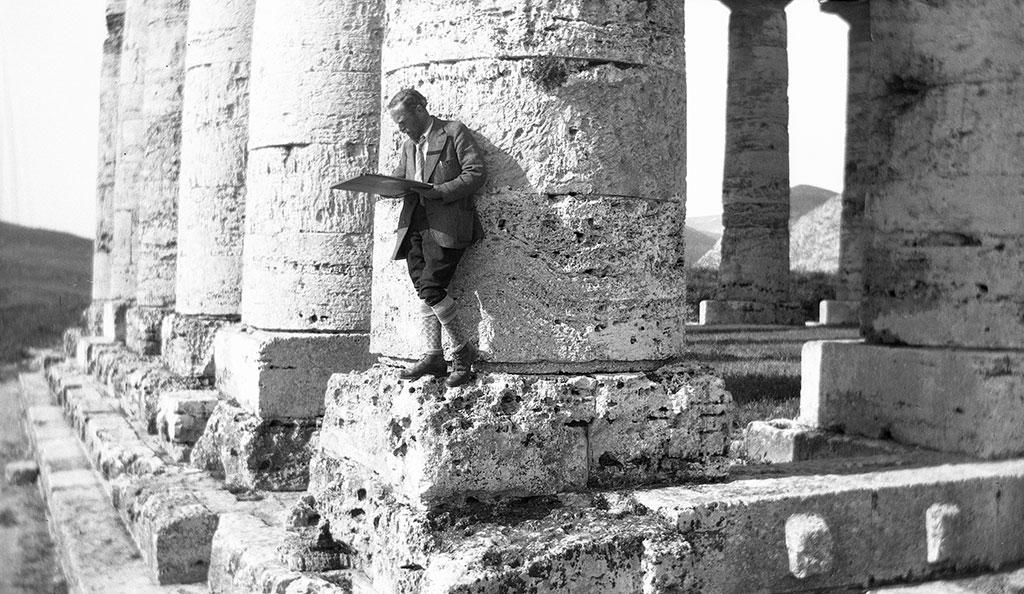
More Escher today

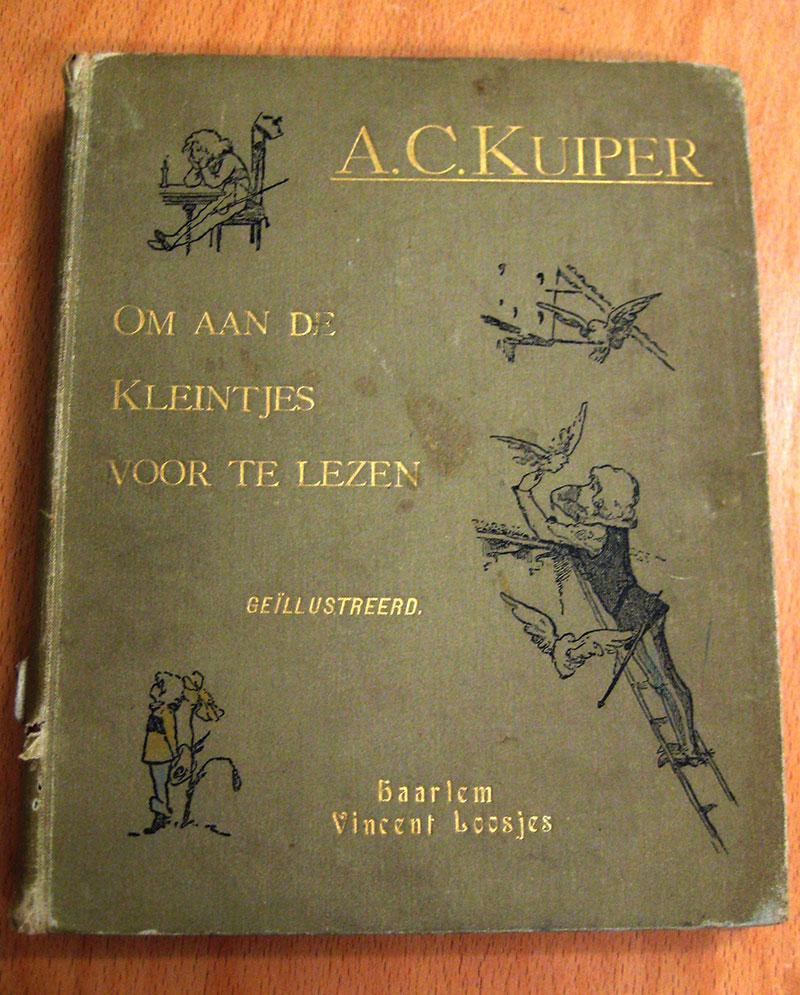
The Lost Princess
"feverish nights, lying in bed as a child, while my father read to me by the light of a half-veiled lamp in an attempt to lull me to sleep."George mentions in particular the story of ‘The Lost Princess’ which provided the inspiration for the print Castle in the Air, from January 1928. Former curator Mickey Piller explores the origins of this remarkable woodcut.
